基于PLC监测换热器的设计(附PLC程序,Proteus图)(任务书,开题报告,外文翻译,论文说明书15000字,PLC程序,Proteus图,软件流程图,硬件结构图)
摘要
在我国石油化工、冶金和发电等行业上,人多采用工业循环冷却水。目前,为了进一步节能减排,提高循环冷却水的利用率,从而对水处理的技术和药剂的质量要求越来越高。同时我们看到,加强水处理的监测也越来越重要。监测换热器较好地模拟了工业现场换热器,对测量有关水质的腐蚀、结垢数据十分重要。利用西门子S7-200和WinCC实现监测换热器系统;运用PID控制,完成对现场数据的采集、自动控制的功能,根据系统温度和流量控制的需要,设计了针对温度和流量的PID控制器,提高了温度和流量控制的效果,系统交互性好,可靠性高,抗干扰能力强。
关键词:PLC;WinCC;换热器;PID
Design and Implementation of PLC-based monitoring of the heat exchanger
Abstract
On China's petrochemical, metallurgical and power generation industries, people use more industrial cooling water. Currently, in order to further energy conservation, improve the utilization of circulating cooling water, and thus the quality of water treatment technology and pharmaceutical increasingly demanding. At the same time we see that strengthening water monitoring is also becoming increasingly important. Monitoring simulate the heat exchanger industrial field, for measuring water quality of corrosion, scaling data is very important. Using Siemens S7-200 and WinCC realize monitor heat exchanger systems; using PID control, complete on-site data collection, automatic control functions required temperature and flow control system designed for temperature and flow rate of PID controllers, improve the effect of temperature and flow control system interactive, high reliability, strong anti-interference ability.
Keywords: PLC; WinCC; exchanger; PID
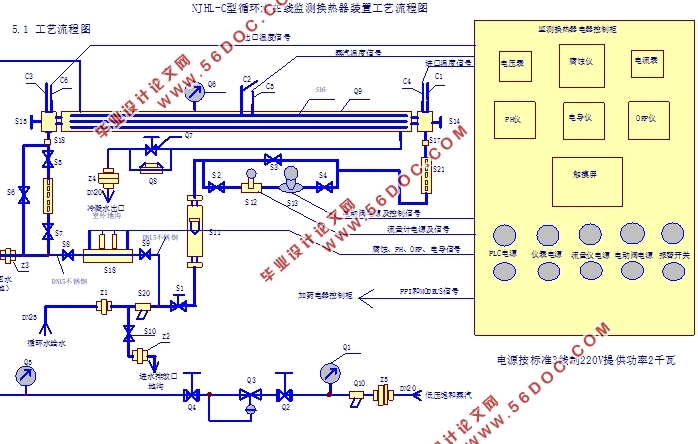
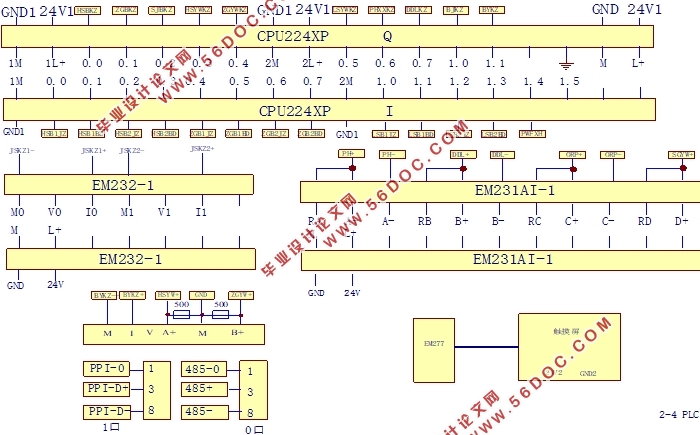
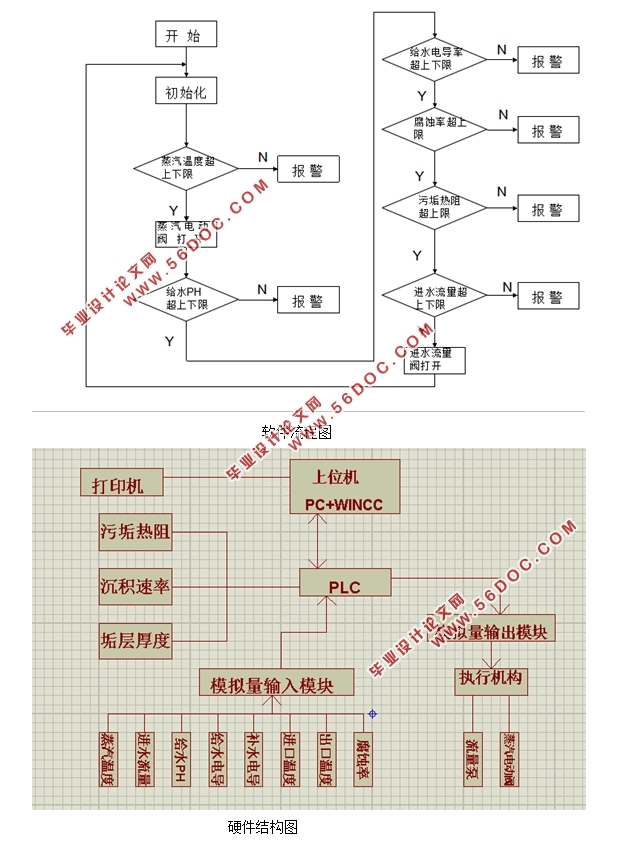
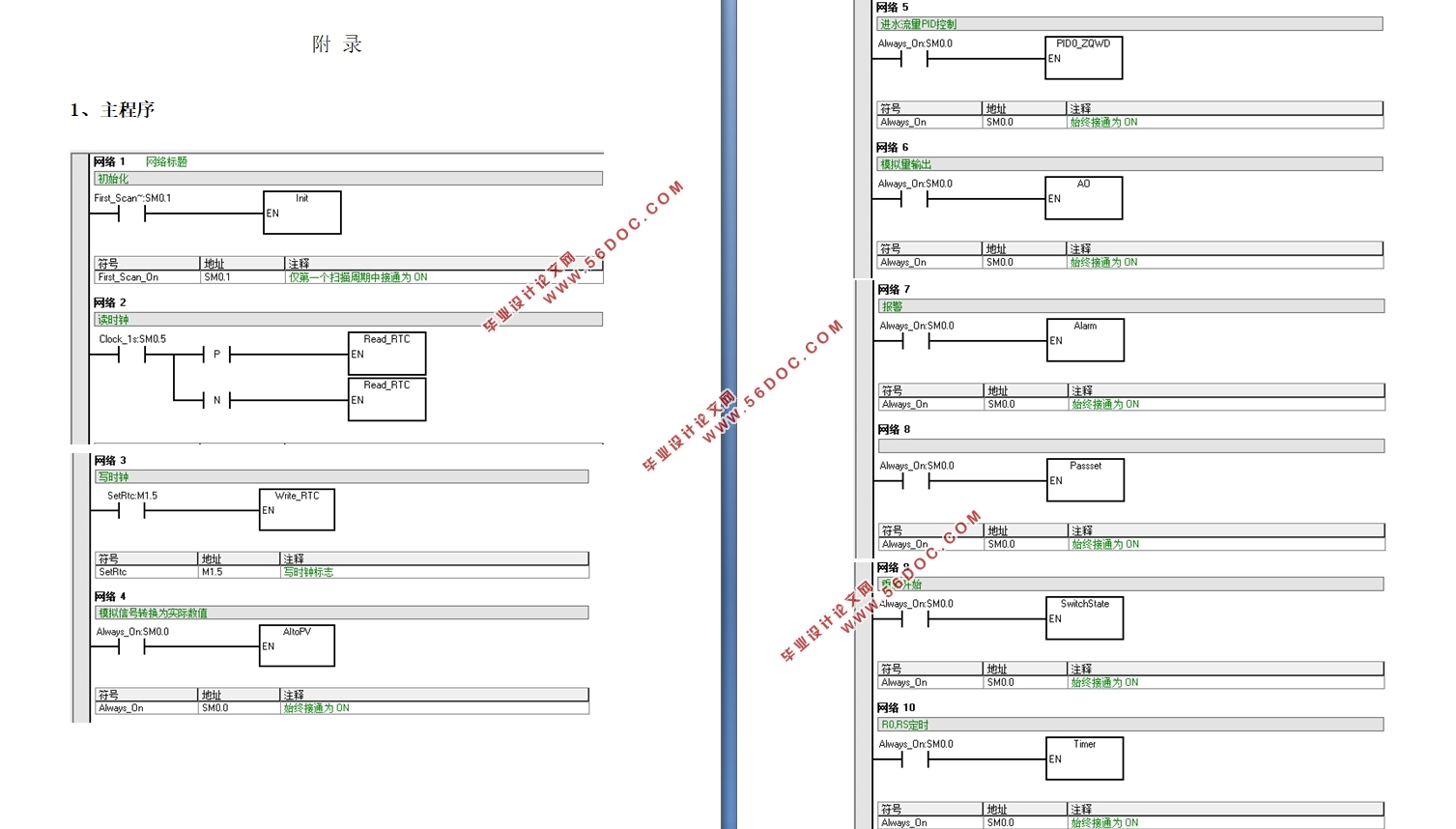
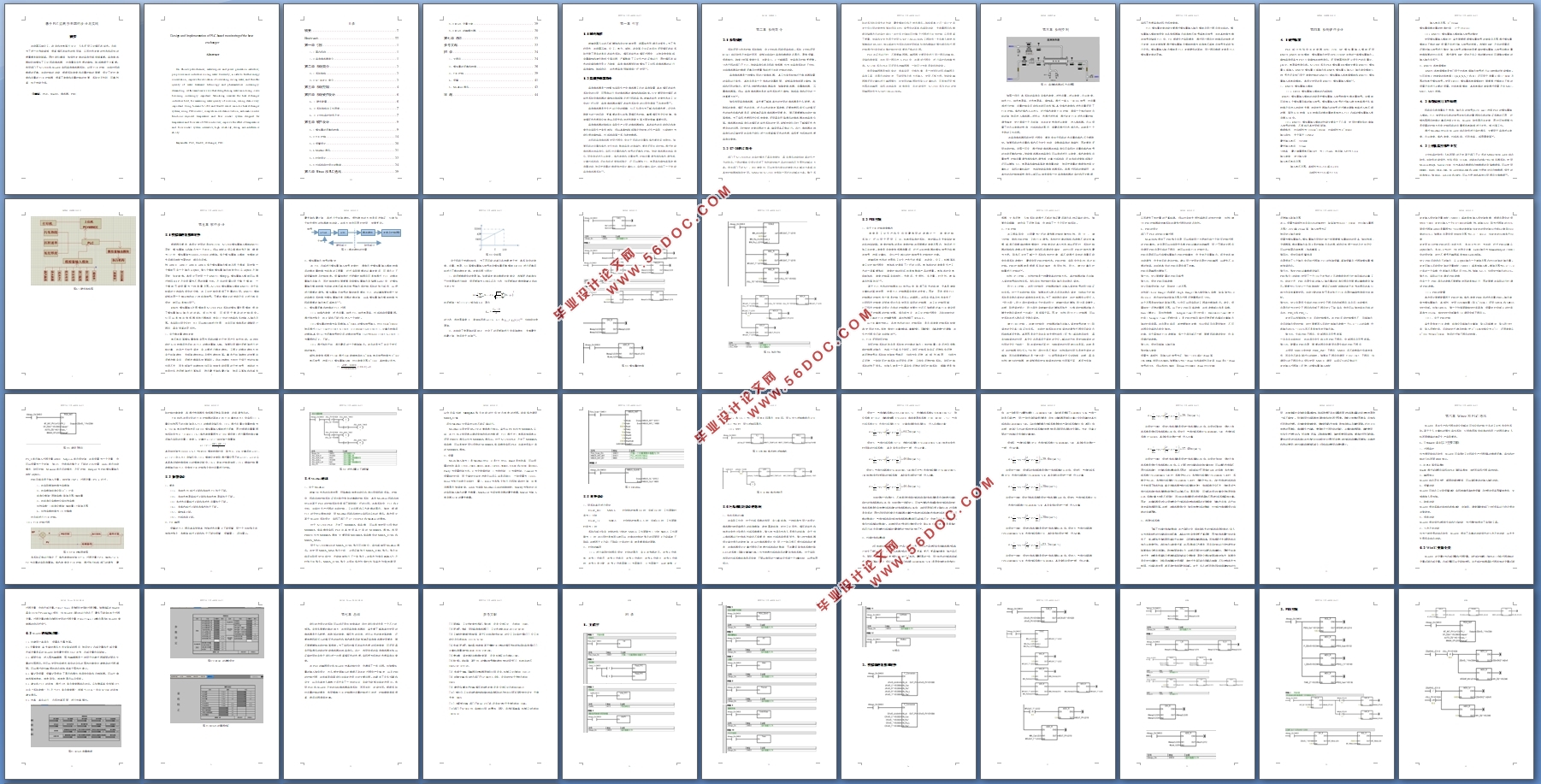
目录
摘要 I
Abstract II
第一章 引言 1
1.1国内现状 1
1.2监测换热器简介 1
第二章 系统简介 2
2.1系统结构 2
2.2 S7-200PLC简介 2
第三章 系统控制 4
第四章 系统硬件设计 6
4. 1硬件配置 6
4. 2系统结构与工作原理 7
4. 3上位机监控软件开发 7
第五章 软件设计 9
5.1模拟量的采集和转换 9
5.2 PID控制 14
5.3 报警设计 20
5.4 Modbus通讯 21
5.5 时钟设计 23
5.6污垢热阻对设计的影响 24
第六章 Wincc和PLC通讯 29
6.2 WinCC变量分类 29
6.3 WinCC的编辑步骤: 30
第七章 总结 32
参考文献 33
附 录 34
1、主程序 34
2、模拟量的采集和转换 36
3、PID控制 39
4、报警 41
5、Modbus通讯 42
致 谢 44
|











